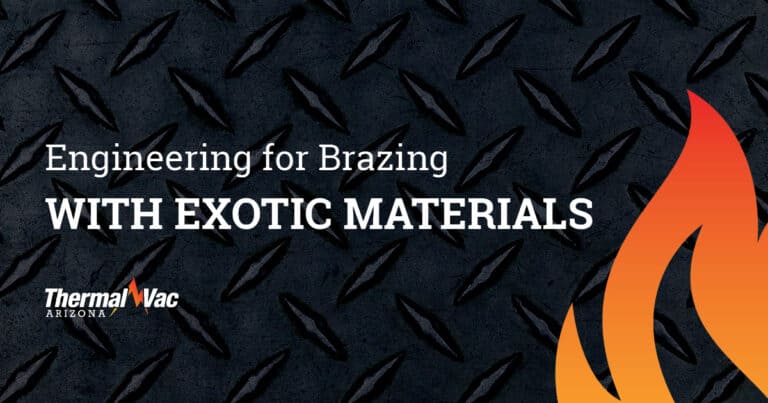Brazing is a process used to join dissimilar metals with a different metal alloy known as a filler metal placed in the joint. This process is very similar to welding. Except, in the case of brazing, the filler metal (alloy) comes in various forms, such as wire, foil, and powder, compared to welding, which only uses wire. Brazing is typically a batch process that lends itself to high production volumes.
Brazing – vacuum brazing in particular – is often the best way to join parts made from exotic materials, such as Inconel, molybdenum, platinum, tantalum, or titanium. These materials offer distinctive performance characteristics that make them ideal for particular applications. For example, engineers might choose an exotic material for its high melting point, superior tensile strength, weight, or final finish.
The distinctive challenge of brazing components made from exotic materials
Along with their high cost, it can also be tricky to work with exotic materials. Critical steps in the fabrication process chain, including brazing, need to account for their propensity for oxidation at high temperatures, among other characteristics.
Thermal-Vac Arizona President Sean Driscol explains, “Common materials are considered the everyday type – think copper, nickel, stainless steel, and aluminum. Exotics, on the other hand, are created by customizing and mixing certain metals to create exotic alloys that generally are made for a specific application. Some examples of exotic metals are platinum, molybdenum, tungsten, columbium, and titanium.”
From an engineering standpoint, exotics often require more intricate and precise processes than common metals.
“Every material has its limitations,” Driscol said. “It’s a matter of whether it can perform in specialty environments. Think of the difference between buying a Model T compared to a new Ford model. One has better performance, more durability, and longer life. The idea of choosing materials is similar. The exotic properties are better, offer more strength, and how they act at high temperatures and space-type atmosphere are superior.”
When should engineers switch to an exotic material?
Driscol and his team sometimes get creative to ensure the customer receives the best product and value.
This includes recommending changing the materials used in their components from time to time. A lot of the time, it is a battle between cost and function. However, by making a material change, you can increase the brazeability and performance of that joint and provide an overall better-performing product.
Driscol discussed an excellent example of how Thermal-Vac Arizona does this.
“Earlier this year, a customer had a requirement that we helped them with; they were considering a 304 ss widely used in the industry and considered an excellent base material for brazing. By understanding the part configuration and its use, we could change them to a different base material and a more appropriate alloy to meet their end need. In addition, it increased their strength and durability,” he said.
“On the surface, it may have increased the price, but through proof testing and performance testing of our recommendations, we ended up increasing the length of time the part could perform its function, thus decreasing equipment downtime for our customer.”
Staying honed in every detail of the process is imperative for the best results at the best cost,” said Driscol, “We like to get involved up front! Thermal-Vac Arizona’s specialty is taking projects from start to finish starting with the design process even before a blueprint and discussing it all the way down to the finished parts.”
At Thermal-Vac Arizona, the team has the ability and expertise to be involved from start to finish. They take pride in doing their due diligence and are fully engaged in the brazing from start to finish.
Carrying on a family’s customer service tradition
Legacy Brazing continues a family tradition that has endured for nearly 40 years. We have been sought out by customers who require the most innovative solutions for challenging project needs, effectively helping us to secure our position as a leader in our industry. Questions? Our team is here to help! Please send us an email or give us a call today at 714-997-2601 for more details on engineering for brazing with exotic materials or any other questions you may have.

